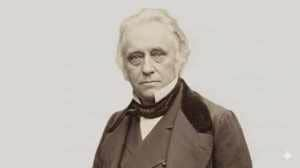Beware of the Gang of Four
From leg curls to shoulder presses to yoga and pranayam, experts list exercise schedules for those with heart conditions, hypertension, diabetes and osteoporosis

CONSIDER THESE FIGURES. According to estimates, In-dia will have an estimated 100 million heart patients by 2020, roughly about 60 per cent of the world’s total. Pro-fessor John Allan Eisman, director of the bone and mineral re-search programme at Sydney’s Garvan Institute of Medical Research, says India has about 300 million people with osteo-porosis. In the next decade, he adds, this figure could well go up to double of the total population of Australia. It is nobetter for diabetes. TheMadras Diabetes Research Foundation & MV Diabetes Specialities Centre in Chennai haveprojectedthat nearly19.4 million patients aresuffering from this deadly disease in the country. Is the future bleak? Yes, the number could well goup to 58 million by 2025.
And high blood pressure? A WHO document suggests that one out of every three deaths in India is due to heart diseases borne out of high BP or hypertension. This, despite the fact that (like the proverbial apple that keeps the doctor away) it takes just two bananas a day to keep blood pressure at bay.
Dismal figures indeed. But worry not. Health experts say there is hope, if not complete cure, in exercise. eye spoke to two health experts, Dr Virendra Sherlekar, a Mumbai-based fitness expert credited with introducing aerobics in India and the director of the gym chain Talwalakars; and Dr Suman Bhandari, one of India’s leading interventional car-diologists.
He is a senior consultant cardiologist and co-di-rector of the cath lab at Delhi’s Escorts Heart Institute. Dr Bhandari also holds the distinction of being involved in per-forming the first balloon angioplasty stent implantation procedure on a human being in South-East Asia.
HEART PATIENTS & HIGH BLOOD PRESSURE
“Regular, moderate exercise,” says Dr Bhandari, “has proven to reduce the occurrence of heart disease by half in a normal person.” This is because a regular activity works at multiple levels. “It reduces your BP by 5-7 mm of Hg; reduces LDL (bad cholesterol) triglyceride and increases HDL (good cholesterol). It increases your glucose tolerance, improves endothelial function (the inner lining of the vessels) and re-duces clot formation and platelet activity.”
What kind of an exercise regime is best for the heart? Dr Bhandari suggests aerobics; a sustained and rhythmic schedule that needs extra oxygen—like walking, jogging and swimming; and anaerobic exercises that are brief and require maximal effect alternating with brief periods of rest like weight-lifting and ball games.
“Patients need at least half-an-hour of dancing, cycling, jogging or some moderately vigorous schedules, threetofour times a week. For heart and lung conditioning, one needs brisk(raising breathing rate), sustained 15-30 minutes of activ-ity and regular(three-four times a week) schedules.”Headds:
“Anything beyond 60 minutes of exercise daily has little added effect on conditioning of the heart and actually in-creases the risk of injury. It is important to maintain a com-fortable pace. For heart fitness, the heartbeat rate just after you stop exercising serves as an index of good or adequate load. Anything between 50-75 percent of your target heart-beatrate for age(Target HR220beats/minuteminusagein years) is fine.”Hecontinues:“Tolose onepound,youneedto lose 3,500calories. Soif youlose 500calories perday, youwill approximately lose 1.5 kg over one week. Of course, less in-take( dieting) too can be a deciding factor.”
Dr Sherlekar recommends circuit training for heart and high BP patients: “This is a sequence of 10-11 exercises that are done without resting. Here, the heartbeat rate will still be within the target heart rate zone. Also, high BP patients should never hold their breath during any exercise regimen. In addition, patients should adopt relaxation techniques like yoga or pranayam or meditation. This should be done in the evening before going to bed.”
OSTEOPOROSIS
An unavoidable condition wherein you lose bone mass as you age, Osteoporosis is also caused by a sedentary lifestyle and if your diet lacks calcium. Experts say women upto the age of 55 suffer more from this disease than men. The loss of bone accelerates almost ten times more for women in menopausal years or after hysterectomy because of the lack of estrogen hormone.
Dr Sherlekar recommends weight-bearing exercises as a “must” for preventing osteoporosis. He says: “Resistance or weight-training in-creases the uptake of calcium into the bones. A regular weight-training schedule increases the bone density over a period of time.” He suggests compound muscle group exercises like leg press and smith machine squats for patients of os-teoporosis. Says he: “Leg extension, leg curls, lat pull down, shoulder presses, chest presses and wide-grip rows can be included in an exercise routine in a circuit regimen. If you do it for six to twelve months, it can be beneficial.”
DIABETES
A good, regular exercise regime helps keep diabetes under check. It can be crucial for patients who are also overweight, especially those with Type 2 diabetes, whose weight is a likely contributor to their disease. Experts suggest that physical exertion can often rein in high blood sugar as effectively as medication. It burns extra sugar in the blood, and also helps make the body more sensitive to insulin. If you are able to embrace exercise and a healthy diet, you may well be able to reduce your medication. Says Dr Sherlekar: “You need to do both cardiovascular and weight training. Weight-training is necessary as it increases the muscle mass. This, in turn, will increase your capacity to store sugar in the muscles for future use, reducing your blood sugar levels.” So get on that treadmill, before it’s too late!
DOCTOR’S PRESCRIPTION
• Remember, anything beyond 60 minutes of exercise daily has little added effect on conditioning of the heart. On the contrary, it increases the risk of injury If you don’t feel normal even after 10 minutes of stopping exercise, you are overdoing it
• The heart rate just after you stop exercising serves as an index for good or adequate load. Anything between 50-75 percent of your target heart rate for age is fine
• A 20 percent drop in death rate has been recorded in patients who, after a heart attack, exercised regu-larly for a follow-up period of up to three years
• Exercise helps reduce angina by decreasing the heart rate rise. It also optimises endothelial function (the inner lining of vessels)
TIP To lose 1 lb/week, you need to burn 3,500 calories/week. That means, 500 calories a day
THE CALORIE BURNING GUIDE
CYCLING 6 mph burns 240 cal/hr; 12 mph 410 cal/hr
JOGGING 5.5 mph burns 740 cal/hr; 7 mph 920 cal/hr
RUNNING 10 mph burns 1,280 cal/hr
SWIMMING 25 yards/min burns 275 cal/hr
TENNIS SINGLES Burns 400 cal/hr
WALKING 2 mph burns 240 cal/hr; 3 mph 320 cal/hr
To burn more calories, increase the time spent on your activity and make it brisker. The American Heart Asso-ciation now prescribes one hour of walking briskly every day to optimise weight in obese people and not the usual 30 minutes
Courtesy: Dr Suman Bhandari




- 01
- 02
- 03
- 04
- 05



























